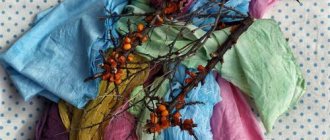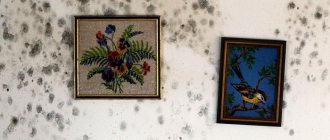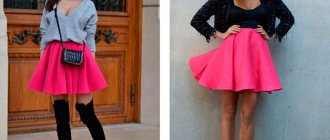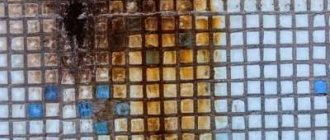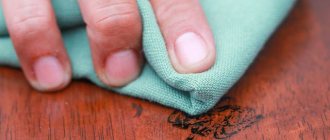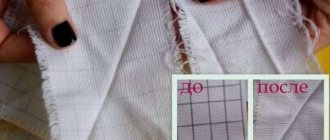A new item looks beautiful and bright, but after washing its color may fade greatly. In some cases, they resort to home dyeing. Then it is important to know how to fix the paint on the fabric so that it does not fade or spoil other things. Using simple methods and available means, you can extend the life of your favorite things so that they retain the brightness of their colors for a long time.
How to paint with acrylic paints on fabric?
Stages of work
- Place the fabric on a waterproof backing.
- Draw a picture. Leave each layer and color of paint until completely dry. ...
- Leave the finished drawing to dry for at least 24 hours. And then iron it completely.
- The drawing is ready!
Interesting materials:
Where are the statistics in Pubg? Where to put a soft sign after Ш? Where should I put a period before or after quotation marks? Where to put the accent tilsiter? Where to put a comma because? Where to put a comma in connection with what? Where is a soft sign indicating the softness of a consonant placed? Where is the c in the circle? Where is the comma placed before so? Where is the icebreaker Krasin located?
Why fix color on fabric?
Additional color fixation on fabric may be necessary in many cases:
- so that the dye from store-bought clothes does not wash out so quickly, things remain bright and attractive longer;
- so that when washed together, things do not fade, do not spoil other clothes, or so that the paint from some elements (inserts) does not transfer to others;
- to more reliably fix the pigment after home dyeing, when you want to change the color, disguise defects on clothes or threads;
- to secure a design made with acrylic paints when hand-painting on fabric;
- so that clothes do not fade onto your underwear when worn.
Fixing the paint is necessary, because with systematic washing, due to the influence of detergents, the dyes are washed out, causing the appearance to deteriorate.
Fixing the color will get rid of faded items
Paints of famous brands
The range is extensive, and certain materials are especially loved by domestic consumers:
"Maimeri", made in Italy. The brand's products are intended for all types of surfaces. It has earned positive marks for its resistance to mechanical damage and excellent hiding power. The range of colors is varied.
"Raphael", made in France. Combines good quality and relatively inexpensive cost. The brand is not replete with an abundance of shades; it is presented in pastel colors.
“Ladoga”, production – Russia. Representative of the inexpensive dye segment. The properties of the pigment have been confirmed by many years of use by many domestic consumers; the solution perfectly resists mechanical stress. Tubes are presented in basic colors, plastic cans - in a variety of basic and combined shades: from phosphorus white to blue-black.
On video: which paints are best to choose for wall painting.
Where to start
Acrylic painting on a wall is impossible without proper surface preparation. How tedious and time-consuming this process will be depends on the initial condition of the wall and the type of its initial finish. If the room is covered with wallpaper, you will have to remove it.
Oil or alkyd paint also needs to be removed, because the acrylic coloring composition will not adhere to such a coating. The plastered surface does not need cleaning if the material lies flat and does not crumble. How to prepare a wall:
- Everything unnecessary - away! Use a spatula, a hair dryer or a drill with a stiff wire brush attachment (the latter option is suitable for removing old oil paint).
- Wash the wall or vacuum it. There should be no dust on the surface.
- The dry and clean base must be leveled. Do this using a quality putty, wait until it is completely dry, and sand the repaired areas with medium-grit sandpaper.
- Cover the wall with a layer of acrylic-based primer. This will ensure reliable adhesion of the coloring material to the surface. Dry.
- Apply base color acrylic paint. It needs to be determined based on what background you plan to draw on. If you intend to paint the entire wall, then choose a neutral, light background. It will be convenient to make a preliminary sketch of a painting or ornament.
- Now it's time to coat the wall with a special artistic acrylic primer.
All! The surface is prepared.
Fixing paint on jeans
It's rare to meet a person who doesn't have a pair of jeans in their wardrobe. High-quality jeans retain their decent appearance for 2-3 seasons and are comfortable and practical in everyday life.
Often jeans fade intensively already during the first wash, staining the skin and underwear. To prevent this and extend the life of your jeans, you need to fix the dye after purchase. The procedure is done at home.
Soaked jeans
We will need:
- Bathtub or other container for washing.
- Laundry soap or powder.
- Salt.
- Vinegar (200 ml per 10 liters of water).
Instructions:
- Turn the jeans inside out and soak them at 40 degrees (do not put the product in too hot water).
- Add a little detergent (gel, soap, powder).
- Keep the item in water for 30-40 minutes.
- Pour a glass of salt into the water and stir.
- Rinse the jeans in warm water; during the last rinse, add the required amount of vinegar.
- Rinse the product completely and dry.
Jeans
You can also do the procedure using a washing machine. Based on the markings on the tag, set the appropriate mode, add a glass of vinegar and 1-2 tablespoons of salt.
Important! In the future, do not use products containing bleach for washing.
Everyone is their own master
Development affected not only science directly, but also people in general. There are more and more talented people who do not want to trust others to create masterpieces.
Parents paint the walls of children's rooms with their kids, desperate car enthusiasts draw fancy shapes on the metal parts of their favorites, sleek young ladies with enviable persistence practice applying ornaments to their perfect nails, young rebels, followers of Picasso and Dali, secretly decorate gray fences and walls of abandoned buildings on dark nights. buildings with magnificent works of street painting.
Surely in almost every home there is acrylic paint, stored for one or another need. Sometimes it is forgotten due to unsuccessful application experience or simply as unnecessary. But at any moment, an artist who has long fallen asleep in the depths of his soul can awaken. Therefore, every artist needs to know how to apply leftovers or how to dilute acrylic paint if it has dried in order to continue creating.
Paint for clothes in cans
There is another option - spray paint for clothes. True, they have their own specifics, which lies in the features of use. In fact, you can apply something like graffiti to a T-shirt or any other fabric (a curtain, for example). It looks interesting, since aerosol spraying of paint from a can allows you to create soft transitions and other unusual effects on clothing that are difficult to achieve with brushes. Spray paint for clothes is sold everywhere. You can ask a consultant at your nearest fabric store or order online. The price of a can is around 350 rubles, but it lasts a long time.
Stages of preparing clothes for drawing
After it has become clear what colors are used to paint on clothes, you should understand the technology directly. Applying designs to clothes is not that difficult. Especially if everything is done correctly.
- It is better to wash and dry your clothes well before work. Any paint will adhere better to a clean, dry cloth.
- After this, the clothes are ironed. This is not necessary, but drawing on a flat fabric without wrinkles will be much more convenient.
- The piece of fabric on which the design will be applied must be pulled onto the base. Almost like a real canvas. True, you shouldn’t pull your clothes too tight. It just needs to be conveniently laid, straightened and well fixed in the desired position.
- To do this, first cut out a base of sufficient size from thick cardboard (the size of the base should be slightly larger than the future drawing). After this, the base is covered with fabric and secured in this position using ordinary pins. By the way, the base will also not allow the fabric paint to be printed onto another layer (for example, when applying a design to a T-shirt).
- Now you can pick up brushes and paint for painting on clothes and feel like a real master!
How to draw on clothes with your own hands?
How to prepare fabric for work and what colors to paint on clothes is now clear. It remains to clarify the last step - how exactly to draw on clothes? It's simple.
The sketch previously drawn on paper is carefully transferred to the clothing using a pencil. Then they just start coloring it with paints.
In this case, you need to follow an important rule: the paint for painting on clothes is light first, and then dark. This is explained simply
If at the first stage of drawing something cannot be drawn correctly, the problem area can be easily painted over with darker paint. But it’s no longer possible to do the opposite. When the drawing is ready, it is ironed from the wrong side. In this case, the paint for painting will adhere well to the clothes, and the item can be used!
This is how paint is used to paint on clothes. If you achieve mastery in drawing on fabric, you can not only revive boring clothes (which have been gathering dust somewhere in a closet on the back shelves for a long time), but also actually create your own fashion, decorate your home, and give unique gifts to friends and family. And professionalism will allow you to sell your products via the Internet or fulfill orders. But the most important thing is the pleasure and pride that this work was done with your own hands!
Save
Save
Vinegar
Good old vinegar will help fix the paint on the fabric and extend the life of your favorite item. The procedure will not take much time and money, but the result will pleasantly surprise you.
Vinegar for fixing paints after dyeing fabric
We will need:
- Large capacity for washing.
- 8-10 liters of cold water.
- 200 ml 9% vinegar.
Instructions:
- Pour vinegar into the water and stir well.
- Place the product in a container with the solution and leave for 10-20 minutes.
- Take the item out and rinse until the smell disappears completely.
- When the product is dry, iron it from the inside, choosing a temperature for a specific type of fabric.
Dyed fabric
This is the easiest and most effective way to fix paint on fabric with vinegar. Important! Dyeing or color fixing is done on washed clothes.
Criteria for choosing suitable paint and fabric
For light fabrics, you can select paints of bright colors and rich variations of their undertones. Translucent and transparent options are suitable here. Dark textiles are painted with paints containing a high density of color pigments. They are also used as decoration based on the material.
Using translucent acrylic paints for painting on light fabric Source static.tildacdn.com
The use of highly opaque and translucent acrylic paints for drawing Source madeheart.com
The classification of acrylic paints for painting on woven fabric is grouped according to the following criteria:
- Fabric type – for silk, cotton, viscose, wool, linen, synthetic and mixed textile materials, universal, for dark and light fabrics.
- Purpose - for drawing figures and painting, for creating contours, contour reserves, coloring (if you need to change the color of the fabric entirely or in some place).
- Temperature of shades – cold, warm colors.
- Transparency, hiding power - transparent, translucent, opaque.
- Degrees of gloss – glossy, matte and their softening (for example, semi-gloss).
- Blend - in tubes, jars or aerosol.
The density of the resulting coating layer plays a big role. This determines whether you will have to apply 2 or 3 layers, or whether one will be enough. Medium coverage paints provide a coating through which the fabric will be slightly visible. High coverage options will give you rich color in just one stroke. Such paints apply tightly, despite their normal consistency and spreadability.
We fix the color at home
several ways to fix color on fabric . The choice of substances and methods depends on what fabric the item is made from.
The principle is the same in all cases:
- The item must be washed, preferably by hand and using mild detergents, in slightly warm or cool water.
- Soak in the solution to fix the color for 20-30 minutes. If the product is new, then simply soak it without pre-washing.
- Rinse in cold water to remove any remaining substances and odors.
Please note: Drying time for acrylic paints
When rinsing, you should not use fabric softeners, and after drying, you should iron without using the steam function.
Before the procedure, the item must be washed
Items must be soaked in a solution to fix the color.
The item needs to be rinsed in cold water.
Fixing acrylic paint
Hand painting is incredibly beautiful; it requires a lot of time and the use of special paints. Of course, you want such beauty to remain on the fabric for a long time, and not fade away after the first wash. Therefore, after painting, you need to know how to fix acrylic paint on fabric.
It is carried out in one of the following ways (using high temperature):
- After applying the design, the paint is allowed to dry completely. Then the image is ironed from the wrong side with an iron. It is better to iron materials that are sensitive to high temperatures, such as silk, through gauze or a sheet of white paper. Do not use the steaming function; select the high heating mode for cotton.
- In a wide container, bring water to a boil without adding any means, then hold the fabric with the pattern over the steam for some time (10-15 minutes).
- If the item is small, then lay 2 layers of parchment on a clean baking sheet and place the item on it. Heat the oven to 150 degrees, turn off the heat. Place the baking sheet with the clothes in the oven for 15 minutes.
You need to iron from the reverse side
Cotton color retention
The advantage of cotton fabric, compared to silk and wool, is its sufficient resistance to various chemical compounds.
Therefore, when processing cotton clothing, various methods can be used:
- Add 100 ml of regular table vinegar to a 10-liter rinsing basin. It can be replaced with 3 tbsp. l. lemon juice.
- Instead of vinegar, you can use 0.5 cups of salt along with the same amount of soda.
- To process cotton, a fairly concentrated salt solution is useful: 3 tsp. for every liter of water. You can keep things in it for up to 1 hour.
Please note: How to paint a hot water tank
If your new jeans fade a lot, then it is enough to thoroughly wash off the “extra” dye. To do this, you need to soak them in warm water for 30-40 minutes, then rinse them in cold water and soak them again in warm water for 30-40 minutes, then rinse them completely.
Vinegar, citric acid or soda will help fix the color of the cotton.
Preserving the color of woolen items
To improve the brightness of the color of items made of wool , as well as threads after dyeing, you need to rinse them in a glycerin solution. You need to add a little of it to a bucket of water (10 l) - 2 tablespoons. Glycerin is inexpensive and is sold in every pharmacy. Warm water should be used; no additional rinsing is required after treatment.
If a woolen item sheds a lot, then you should use ammonia. It needs to be added 1 tbsp. l. per 10 liters of water, after half an hour of exposure, clothes should be rinsed in water with the addition of bite (2 tablespoons per bucket of water) and dried in the fresh air to get rid of the pungent odor.
Important! Under no circumstances should you use hot water to wash and process woolen items, otherwise the item will shrink significantly. The best option is a temperature no higher than 30-40 degrees.
Glycerin is used to fix the color of woolen items.
pros
Characteristics and advantages of acrylic paints for painting on textile or knitted fabric:
- Wide selection of colors and shades.
- Colors can be mixed, diluted with white, shaded with dark to obtain original tones.
- High ductility during distribution.
- Fast drying.
- Moisture resistance of the coating and resistance to temperature changes and frost.
- Preserving the integrity of the patterned coating during machine washing, creasing, folding, and folded storage.
- Environmentally friendly material.
- They have antiseptic properties due to the content of acrylic resins.
- No pungent specific odor.
Painted jackets are not afraid of either rain or snow if the designs are made with acrylic. It is not at all afraid of moisture, water or sub-zero temperatures. An additional advantage of such paints is their affordable price. This is an excellent choice for beginners in the field of coloring and painting fabrics.
Ethnic Petrykivka painting with acrylic paints on light scarf fabric Source pinterest.ru
The denim jacket is beautifully finished with fun hand-painted acrylic paints Source livemaster.ru
Stylish sneakers with a denim top, decorated with acrylic paints Source m.alibaba.com
Preparing the palette
The palette is used to mix colors and obtain new shades before applying paint to the canvas. Even a ceramic plate with a glossy surface can serve as a palette. But it is better to use a special artistic palette made of white plastic. It must be clean and have a smooth surface. On this basis, the shades of the spectrum are clearly visible and can be easily mixed with a brush.
To ensure that the paint sticks less to the palette and is easier to wash off later, the product should be sprayed with water from a spray bottle before work. The same can be done with paint applied to the palette. This technique will allow it to remain wet longer and maintain plasticity. After work (and sometimes during it, if the palette is too dirty), the tool must be washed. If the paint has not hardened too much, this can be done with water. And dried ones will have to be removed using a solvent.
Types of acrylic dyes and their areas of application
Organic compounds have been known to mankind for quite some time. Some of them are used in their original form, others are replaced by newer and safer substances. Acrylic paint has practically supplanted its predecessor, oil paint, from the sphere of construction and design due to its exceptional properties. A polymeric, water-soluble, quick-drying dye without a pungent odor is used not only in painting, but also in external and internal finishing works.
In turn, high art has long spread beyond the stuffy studios of unknown artists. Fearless master painters have come out into the world and are applying their talents in various fields. Artistic painting these days can be seen not only on canvases or kitchen utensils. Phantasmagoric ornaments, heroes and scenes, executed by talented hands, are found in clothes, manicures, on the walls of houses and apartments; drawings adorn the shiny sides of new cars and designer furniture.
Famous artists who worked in acrylic techniques
Among the famous artists who have used acrylic in their work, there are many world famous personalities. A huge contribution to the popularization of acrylic painting was made by:
- Mark Rothko. The brilliant creator of color field painting was one of the first to become interested in acrylic paints back in the late 1940s. It was at this time that he began to create in the style of abstract impressionism and began to gain worldwide recognition.
- Jackson Pollock. For his famous drip painting, acrylic paints were ideal. Until his death, Pollock actively used his favorite technique when creating his large-scale abstract works.
- David Hockney. The iconic representative of pop art loves to create with acrylic paints. His most famous work, “Portrait of the Artist,” was painted back in 1972 in acrylic.
- Justin Gaffrey. The paintings of this unique contemporary self-taught painter cannot be confused with anything else. The former restaurant owner, and today a famous artist, creates textured paintings in bright colors. It works in an original manner, using piping bags and nozzles.
- Neil Hamelin. The contemporary Canadian artist is widely known for his realistic works. He is excellent at charming rural landscapes and images of sailing ships that evoke deep spiritual awe.
Tips for caring for fabric so it never fades
The main culprits that cause clothes to fade are not very high-quality dye, as well as intensive washing. The buyer cannot influence the first parameter in any way, but following the rules of care will help prolong the life of your favorite things that are prone to shedding.
Pay attention to: How to paint a kitchen countertop
The main recommendations are:
- Colored clothes, especially those that fade, should always be washed separately, following the instructions on the label.
- Such products should be washed by hand or in a washing machine using the most gentle cycles: quick or light wash, wool, delicate items.
- The water temperature should not exceed 30-40 degrees. The higher it is, the more things will shed.
- You should use only soft liquid laundry detergents, special varieties for wool. Regular dry powder is too aggressive.
- Under no circumstances should products containing bleach be used on colored items.
- Brightly colored items should be dried in the shade so that they do not fade from bright sunlight.
When washing dyed items, you can add regular table salt to the detergent . It prevents paint from washing out and helps to deal with dirt faster. It can be taken in a 1:1 ratio with detergent. When rinsing faded items, each time after washing it is good to add a little vinegar to the water (3-4 tablespoons per bucket of water). The smell disappears quickly enough, and the color will always be bright.
Liquid washing gel



